The Chinese Educational system is the combination and unity of educational institutions and educational norms. As the administrative educational department of the Chinese state council, the main responsibilities of the Ministry of Education are managing the national education work, making overall plans, coordinating and administering the educational business of the whole country. This article aims to introduce the ancient Chinese education system and modern ones, then list a series of advantages and disadvantages of the Chinese current educational system.
During the primitive period, the concept of “education” did not exist yet. People back at that age can only learn from the examples or verbal instructions from the elders in their society.
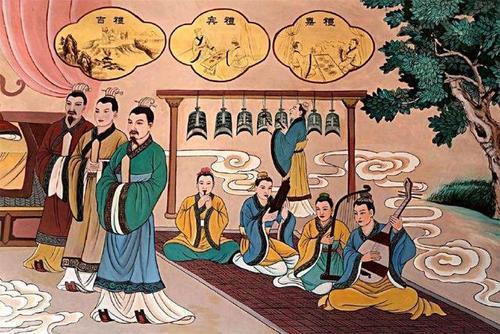
Things have changed since the invention of the Chinese pictograph. For the first time, people were able to record down their daily routine, working experiences, and exchange information. More importantly, it makes the idea of education possible.
At around 2697-2037 BC, the era of the five emperors, with the appearance of the pictograph, and the thriving of the multiple clans (later formed into a confederacy of tribes), the formal institution was established naturally. It was called “Cheng Jun”. The main purpose of this institution was to hold collective events such as traditional sacrifices or major festival ceremonies and preaching notices, regulations and requirements, as well as mobilization before military action. To a certain extent, it plays a significant educational role.
Since the Xia and Shang Dynasties, China has entered slavery society. With the development of the pictograph and higher social productivity, the increasing cultural demand requires a better form of educating method. Under such historical conditions, the earliest official schools appeared. The purpose of this education is to cultivate the candidates of the future rulers, who respect gods, obey filial piety and more importantly know how to fight in the war.
There were two kinds of teaching institutions set up by the ruler. One was called “Dong Xu” which allows only the children who were born into noble families. The other one was called “Xi Xu”, where the kids from ordinary civilians can also have a chance to learn. Due to the huge gap between the two classes, what they learn can be very different.
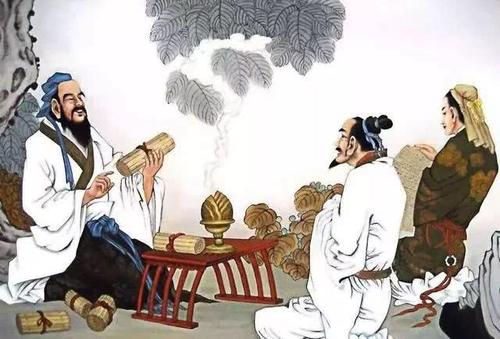
During the Spring and Autumn period, the relationship between production and the new feudal system gradually came into shape, causing the decline of official schools and the rise of private schools. Differing from the former one, private schools focus on learning and advocate the contention of a hundred schools of thought. Confucius, Mozi, Mencius, Xunzi and so on were famous private schoolmasters.
After the Emperor Qin Shihuang (the first emperor of ancient China) destroyed the other six countries and unified China, in order to strengthen the centralization of the monarchy, he carried out a series of cultural and educational policies to advocate the Legalism and excluding Confucianism.
The policy strictly prohibited private schools, and set the law as the way of education and appointed the officials as teachers. Although there are many academic controversies about the so-called "burning books and burying Confucianism", it is an indisputable fact that the cultural autocratic policy is a great retrogression of ancient Chinese education. The Qin Dynasty perished with the death of the first emperor. This can be a great proof of Qin’s way of educational policy by advocating Legalism and excluding Confucianism was a total failure.
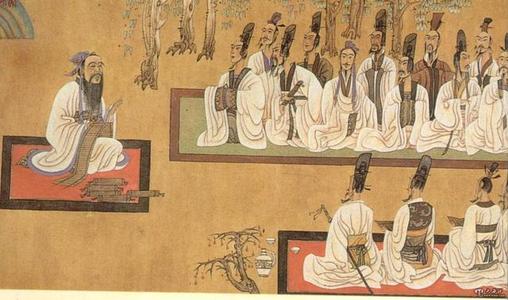
The rulers of the Han Dynasty summed up the historical lesson of the death of the Qin Dynasty, implementing a completely different way of education policies. During the reign of the Wu Emperor of Han Dynasty, he established the “Confucianism only” policy, formed Culture Patterns by taking Confucianism as the orthodox and supplemented by the thought of law and Taoism.
The schools in the Han Dynasty were also divided into official schools and private schools. The education of the Han Dynasty established the basic framework of education in the feudal society of China. It not only established the important position of Confucianism in the education of feudal society but also laid a solid foundation for the education of the whole feudal society in the aspects of the educational system, facilities, contents and forms.
During the Northern and Southern Dynasties, the Nine-grade System adapted to the exclusiveness of centralized authoritarianism. In this context, the system of selecting talents came into being. However, the influence of aristocratic families is expanding day by day, leading to the gradual transformation of Nine-grade system into an important political tool for aristocratic families to expand its influence.
At the end of the Northern and Southern Dynasties, the Nine-grade System had been attacked fiercely, and the method of selecting candidates by examination was becoming more and more popular among scholars. It was in this process that the imperial examination system began to sprout.
Emperor Wen of the Sui Dynasty abolished the Nine-grade System which protected the status of the aristocrats for a long time.
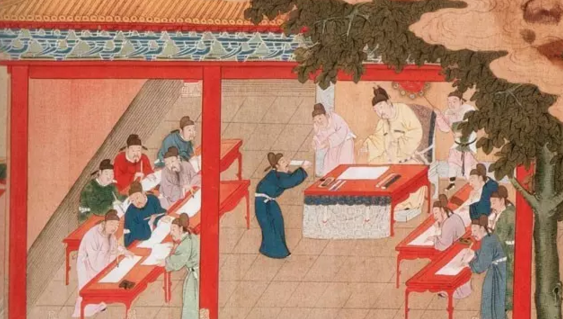
Instead, the imperial court began to use the method of public examination to identify talents, so as to employ them according to their abilities. This action also returned the power selection and appointment of feudal officials to the central government and eliminated the corruption of the local and central government in the selection of officials. Through the imperial examination, the official career is open to the whole landlord class, which is conducive to attracting talents, easing contradictions and expanding the foundation of the ruling class. The imperial examination system closely linked reading, examination and being an official, thus improving the cultural quality of officials, greatly strengthening the centralization of power, conducive to the stability of the political situation, and promoting the development of education, science, technology and culture. This was a major reform in the system of selecting officials in ancient China, which was used by later dynasties.
In the Song Dynasty, with the foreign invasion, internal strife, and corruption in the imperial examination, people of insight fled to the countryside. The academy was formed and flourished during the Song Dynasty. It was the product of the development of private schools in ancient China to an advanced stage. It was also the institutionalization stage of private schools that made a historical contribution to the inheritance and dissemination of Chinese traditional culture and education.
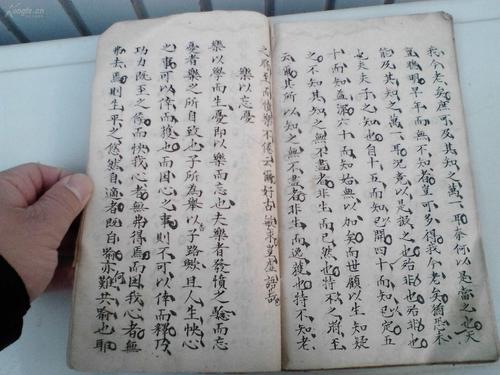
The Ming and Qing Dynasties were an important historical stage in the development history of feudal society in China. Cheng Zhu's philosophy was in the leading position in education, but in practice, it was becoming more and more rigid, empty and empty, and had been severely criticized by progressive thinkers and educators.
After the middle age of the Ming Dynasty, with the sprouting of capitalism and the development of commodity economy, an influential thought of practical education was formed. Wang Fuzhi and Yan Yuan advocated practical education, and launched a more violent attack on Neo Confucianism education and Eight Legged scholar selection, which made the education in this period reveal the dawn of modern education. The development of ancient Chinese education is tortuous, but it is also the same, which lays the foundation for today's glory.
Chinese education can be roughly divided into the following stages:
It refers to the educational process of 3 to 6-year-old children in kindergarten. Kindergartens are generally run by the nongovernmental organization. In metropolis and medium-sized cities with developed economies, kindergartens have basically met the needs of preschool education for children. The development of preschool education is advancing from the city to the countryside. Some townships and towns have basically popularized one-year preschool education.
It refers to the educational process of children aged 6-12 in primary school. Primary schools are generally run by local governments, but also by individuals and non-governmental organizations.
It refers to the process of kids between the ages of 12 and 17receiving education in secondary schools. The ordinary middle schools can be divided into junior high school and senior high school, each with a three-year schooling system. Some junior high school graduates will enter senior high school and some will go to vocational high school or technical secondary school. Secondary schools are generally run by local governments.
Higher Education refers to junior college, undergraduate and graduate education after secondary education. The institutions of higher education in China are universities, colleges and junior colleges. Colleges and universities have three functions: teaching, commencing scientific research and social services. In order to promote the development and reform of higher education, the "211 Project" was put forward during the “1995” plan, that is, to build about 100 colleges and universities and a number of key disciplines in the 21st century.
Continuing Education includes adult technical training, adult nondiploma higher education and literacy education.
The pros and cons of Chinese education have long been a controversial issue. Some people in China have a very strong, repelling feeling about Chinese education style. They disagree with the current education system which takes up too much time for the kids and deprived them of their nature. Yet some other people are being very supportive, because they believe if the kids study hard enough, they will have a chance to win a better future. Here are some objective views of the pros and cons of the Chinese education system.

First of all, the Chinese education system makes sure that everyone stands on the bottom line “fairness”, and that is the college entrance examination. It maximized the scientific and fairness selection of the talented students, provided a condition for the students from rural areas to change their economic status. More importantly, there is not a better option to replace this system at this moment.
Secondly, although Chinese education may not select the most talented kids, it can effectively eliminate the weakest group of students.
Thirdly, the seemingly stiff cramming education system can actually help most ordinary kids to build a solid foundation. It’s like building up a skyscraper, with a solid foundation, you may achieve a higher goal. Students can master more knowledge and skills in a short time. Through the teacher's direct teaching, the students will save more time and improve the efficiency of learning.
Fourth, the students have a good learning environment, so that students can study in a peaceful life.
First, the lack of children's education will bring invisible pressure to the kids. The teacher and parents focus too much on the kids’ grades and kept feeding them the idea of “if you don’t study hard enough, you are a bad kid, with no promising future”. This will create some unpleasant memories for the children, stifle their creativity.
Secondly, the study took up most of their time, yet neglected the practice. In terms of examination, the students' ability is no doubt quite good at it. During their learning career of more than ten years, dealing with the examination was like software deeply installed in the hearts of every student. Students are like computers; they simply think and act according to the instructions of the teachers. In the process of learning, they gradually lose their own nature and innovative ability.
Thirdly, the unbalanced distribution of educational resources is directly related to the development of China's economy, which is mainly manifested in the fact that the educational resources in cities are obviously better than those in rural areas, and eastern and coastal areas are obviously better than Western and remote areas.
Fourth, the industrialization of education is a serious issue. Since when has education become an industry? Although the country has not recognized this problem yet, education indeed has become an industry. The problem of education fees is really a stubborn disease. In many western regions, children can't afford to go to school, and many students in rural areas can't afford to go to university. In some big cities, there are high school selection fees. It is said that education has been rated as one of the "top ten profiteering industries".
China's education reform has entered the "deep-water area", facing many unprecedented new situations, new problems and new contradictions. The reform is difficult and under great pressure, and there are many contradictions. Many problems do not have ready-made answers and need to be explored in practice.
However, China's education system is not unchangeable, but constantly changing. “Embrace the modernization educational methods, absorb the essences of the world’s advanced educational concept and create a better future for China” is the guideline and direction of development of China’s education.
One day, the Chinese education system will become more prominent in personalized education, to make up for deficiencies.
